One-stop flow-through pesticide detection solution: TSQ Endura LC-MS/MS and TraceFinder software for simultaneous high-throughput analysis of 440 pesticide residues in vegetable substrates
1. Foreword
In recent years, the food safety incidents have caused people's strong concern. Continuous and strict food safety supervision has become the biggest consensus of the whole society, which directly stimulates the food safety standards with stricter standards and stricter system structure. Birth and upgrade. In China, the new GB2763-2014 “Maximum Residue Limits of Pesticide in Food†has been officially promulgated and implemented, together with Japan’s positive list system and EU EU/EC Directive No. 752/2014. Together, they form a strict food safety regulatory standards system. Compared with the previous edition, the new national standard 2763-2014 has a large expansion and increase in the number of pesticide residues and maximum residue indicators (MRLs), which undoubtedly puts higher and stricter on the corresponding pesticide residue detection methods. Technical requirements. Today, the working norm in the field of food safety has been transformed into high-sensitivity, high-specificity high-throughput detection of hundreds of multi-residue projects in complex matrices, which requires the innovation of mass spectrometry. There is also a need to improve the test solution.
TSQ Endura LC-MS/MS is a new generation of LC/MS based on Active Ion Management (AIMTM), which uses S-lens RF lens set, neutral particle block, HyperQuad quadrupole, Integrated innovations such as active ion collision cell and dual-mode discrete dynode detector (Figure 1) enable the instrument to achieve a new breakthrough in ion focusing, transmission, isolation, collision and detection plasma control, giving it leading sensitivity. With a scanning speed of up to 500 SRM/s and excellent robustness, it can fully meet the technical challenges of multi-residue high-throughput detection in complex matrices, and has broad application space and use value in food safety.
This paper presents a one-stop pesticide residue detection solution based on TSQ Endura MS with TraceFinderTM software as the process driven engine, and applies it to the simultaneous high-throughput detection of 440 pesticide residues in pepper matrix. analysis.
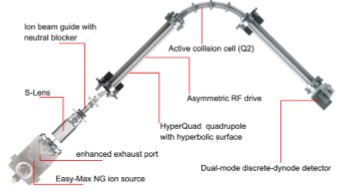
Figure 1. Schematic diagram of the hardware structure of the innovative TSQ Endura MS mass spectrometer
1. Experimental conditions
2.1 Sample preparation
The pesticide residue standard used in the experiment was supplied by Ultra Scientific (Rhode Island, USA), and the mother liquor concentration of 440 kinds of pesticide residue mixed acetonitrile solution was 2.5 μg/mL.
The bell pepper blank matrix was supplied by the California Department of Food and Agriculture, and the substrate was obtained by 15 g of pepper homogenate using 15 mL of acetonitrile and extracted by the QuEChERS method. When configuring the matrix plus standard, first add an appropriate amount of matrix to 1.5 volumes of ultrapure water to improve the solvent effect. Then take the pesticide residue mixture and dilute it with acetonitrile/water (v/v, 4/6). Finally, mix the blank matrix after adding water with the standard solution of the corresponding concentration point, and mix well after vortexing to obtain the concentration. A series of solutions of 0.001, 0.002, 0.005, 0.01, 0.02, 0.05, 0.1, 0.2, 0.5...~200 pg/μL (ppb). From low to high, three injections were repeated at each concentration point to test the minimum detection limit (LOD) and limit of quantitation (LOQ) of pesticide residues in the pepper substrate. The standard curve for each pesticide was from LOQ to 200 pg/ Draw within the μL concentration range. 2.2 Chromatographic separation
Reversed-phase chromatography was performed using a Thermo Dionex Ultimate 3000 ultra-high performance liquid chromatograph equipped with a HPG3400-RS binary high pressure gradient pump (35 μL small volume static mixer), WPS-3000TRS autosampler and TCC-3000RS column oven The chromatographic conditions are shown in the table below.
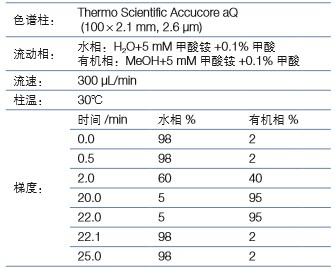
2.3 mass spectrometry
Mass spectrometry was performed using the TSS Endura MS tandem triple quadrupole mass spectrometer's tSRM timed Selected Reaction Monitor with an Easy-Max NGTM HESI heated electrospray ion source. The tSRM conditions, including retention time, SRM ion pair, RF voltage and collision energy, are directly called from the TraceFinder software version 1.0 (pesticides Quantitation chemical database) (Figure 2). The TSQ Endura MS instrument method is edited as a drag.拽 - Release design and flexible customization of various method templates (Figure 3). According to the different ionization properties of pesticide residues, the positive and negative ionization modes in the method switch back and forth. Depending on the peak width of the pesticides with different chemical properties due to chromatographic behavior, set the tSRM time window to 1~5 min. Except for a few substances such as thiromomorphine and propiconazole, the vast majority were set to 1 min. The Q1 and Q3 resolutions are set to 0.7 FWHM and the Q2 collision cell argon pressure is 1.5 mTorr. The tSRM scan cycle time is 1.2 s. The remaining mass spectrometry conditions are shown in the table below.
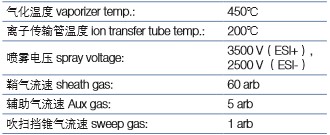
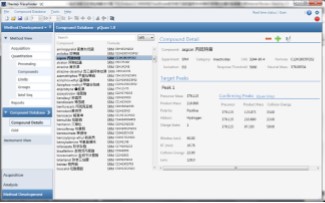
Figure 2 Residue detection method TraceFinder pQuan chemical database

Figure 3 Mass spectrometry tSRM instrument method template interface used in the experiment
2.4 Data Processing
The experiment uses TraceFinder 3.2 software for database management, sequence acquisition, data processing, and report template customization and output. Its flexible and powerful functions provide a one-stop service for the process of pesticide residue detection. In particular, as a database of detection methods for common food residues in food safety, the pQuan database in TraceFinder contains complete quantitative and confirmatory information on pesticide residues, as well as retention time, CAS, basic uses and other related information (Figure 2). With the pQuan database, experiments no longer require the use of standard samples for cumbersome method optimization and development. Instead, the relevant conditions are retrieved from the database and samples are directly measured. As shown in Figure 4, TraceFinder software streamlines the complexity of hundreds of pesticide detections at the same time.
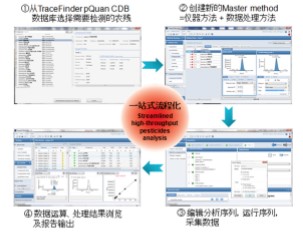
Figure 4 Flowchart work steps for TraceFinder software for pesticide residue detection
3. Results and Discussion The TSQ Endura MS features industry-leading SRM scanning speeds and a simple tSRM function that allows the mass spectrometer to scan only specific ion pairs within a given time window. On the one hand, this greatly improves the utilization of the mass spectrometry ion dwell time; on the other hand, it only makes it possible to simultaneously simultaneously treat hundreds of pesticide residues in a fast gradient as short as 20 min. Sensitivity detection is possible (Figure 5). By optimizing the chromatographic conditions, from the scatter plot and the frequency plot of Figure 6, the experiment achieved a good chromatographic separation of 440 pesticide residues, which were evenly distributed within the 20 min effective separation time window, which ensured the mass spectrometry tSRM. The scan cycle time can be evenly distributed to each transition to improve the quantitative effect.
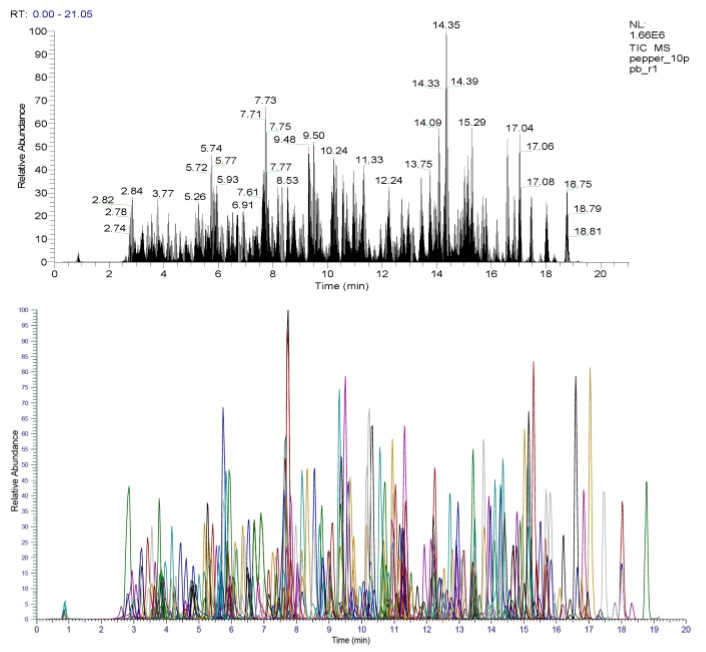
Figure 5 Above: Total ion chromatogram of simultaneous detection of 440 pesticide residues in pepper matrix, below: extracted ion chromatogram of 440 pesticide residues (10 pg/μL)
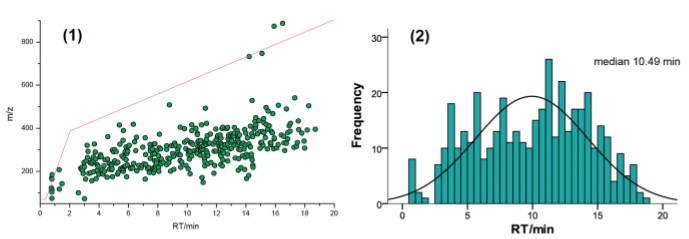
Figure 6 (1) exact m/z vs. retention time scatter plot, (2) frequency distribution of retention time
TraceFinder has powerful data browsing, editing and reprocessing functions to provide full-featured support for high-throughput pesticide detection data processing. Figure 7 shows a typical interface of the TraceFinder data results. The information of the LC-MS/MS pesticide residue analysis is highly condensed and graphically displayed, which helps to improve the information in the actual inspection work. Processing efficiency. At the same time, this interface can be templated and edited, with excellent scalability to meet the individual needs of different laboratories.
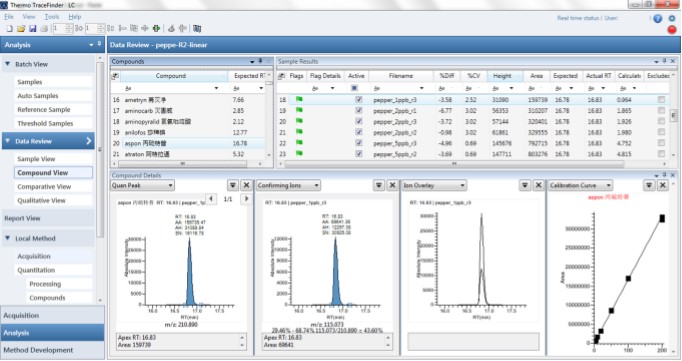
Figure 7 Typical interface of TraceFinder pesticide detection data processing results (Compound View)
The experiment strictly considers the variation coefficient CV % of the peak area (the CV% of the three repeated injections at the LOD concentration point starts to stably reproduce less than 30%, the LOQ concentration point is less than 20%), the chromatographic peak shape and the signal-to-noise ratio, etc. The LOD and LOQ values ​​of the simultaneous detection of 440 pesticide residues in the pepper base by TSQ Endura MS were determined. The results are shown in Table 1. The LOD ranges from 0.005 pg/μL (5 ppt) to 20 pg/μL (20 ppb) depending on the chemical properties of the pesticide. The LOQ is distributed from 0.01 pg/μL (10 ppt) to 50 pg/μL (50). In the range of ppb), the corresponding peak area CV% is 0.34~29.95% and 0.43~19.94%, respectively. Moreover, the standard curve correlation coefficient of 430 pesticide residues is greater than 0.99, indicating that the TSQ Endura MS has excellent linearity.
Further statistical analysis showed that the median values ​​of LOD and LOQ of 440 pesticide residues in the experiment were 0.05 pg/μL (50 ppt) and 0.1 pg/μL (100 ppt), respectively, indicating active ion-based control. The technology developed TSQ Endura MS has excellent sensitivity performance. At the same time, it is worth noting that in order to ensure the high throughput of the analysis and the detection effect of most pesticide residues, a single mobile phase system is used for fast positive and negative ionization switching, which sacrifices the agriculture suitable for negative ion mode to some extent. Residual detection sensitivity (using ammonium acetate system, there will be a great improvement). However, as shown in Figure 8, the frequency analysis of the LOD and LOQ values ​​of the pesticide residues in Table 1 shows that there are 438 (99.5% of the total) and 430 (97.7% of the total) pesticides. LOD and LOQ are less than 10 pg/μL, the national minimum MRL limit, and this is a common standard in the EU regulations and the Japanese positive list system. The LOQ achieved by this method all meet the MRLs index requirements in the mandatory national standard GB2763-2014. Therefore, TSQ Endura LC-MS/MS is a high-quality platform for high sensitivity, high specificity and high-throughput pesticide detection in the food safety field. 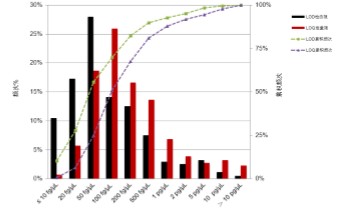
Figure 8 Frequency statistics of LOD and LOQ values ​​for simultaneous detection of 440 pesticide residues in this experiment
4. Conclusion:
• With the innovative design of active ion management technology, TSQ Endura MS delivers an organic combination of superior sensitivity, extreme durability and high ease of use.
• TraceFinder's powerful and flexible data processing capabilities, intelligent interactive information management interface, and pQuan's database of pesticide residue detection methods provide a one-stop, full-process service for pesticide residue detection.
• The combination of TSQ Endura LC-MS/MS and TraceFinder software will provide a broad application space for pesticide residue detection.
5. Acknowledgement
The authors would like to express their sincere gratitude to Dr. Jia Wang and Dr. Dipankar Ghosh of Thermo Fisher Scientific's San Jose plant in the United States for their unselfish help in the standard procurement and experimental organization. Thanks to CDFA for giving us a variety of blank substrates for vegetables and fruits.
Table 1 Quantitative results of 440 pesticides in pepper matrix
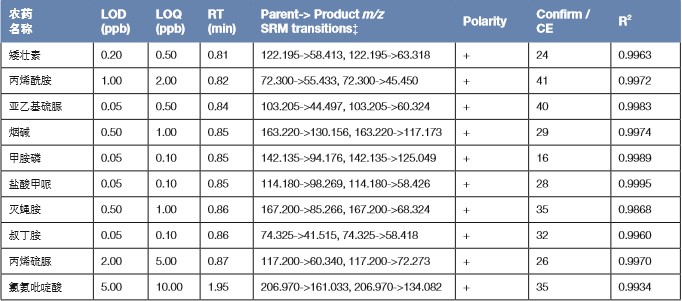
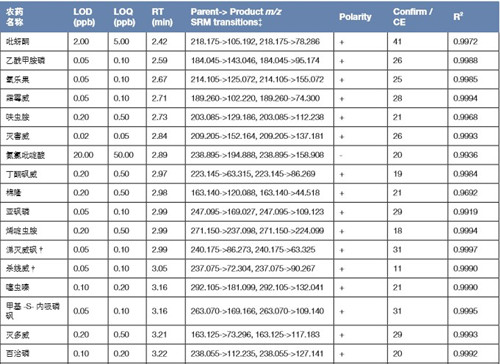
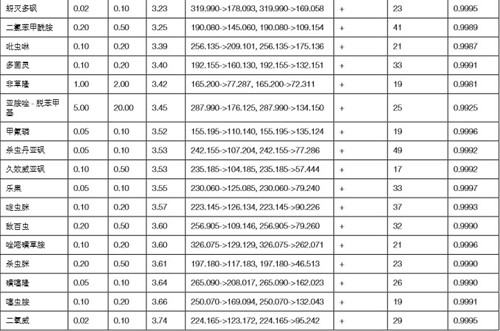
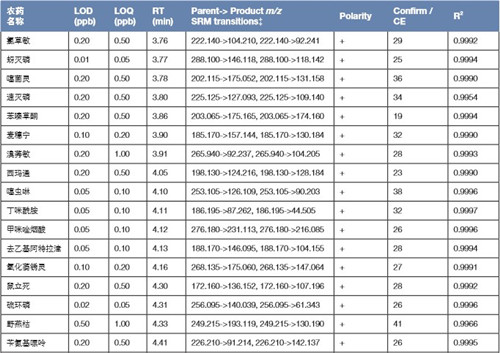

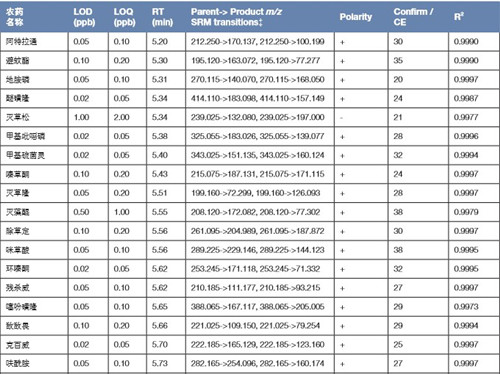
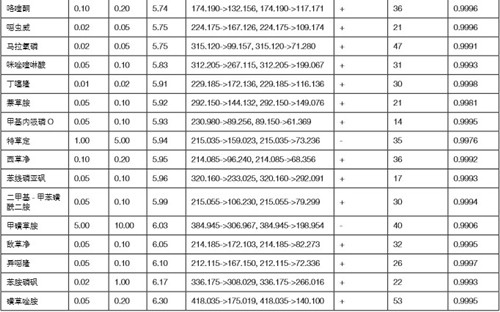
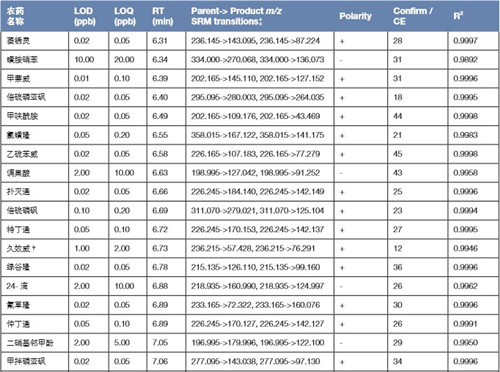
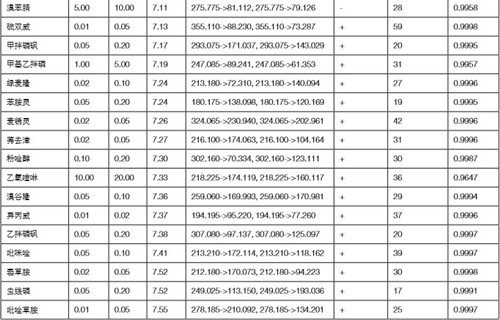

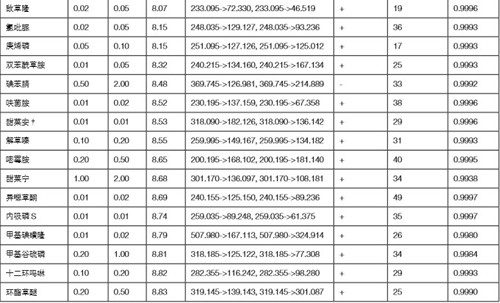
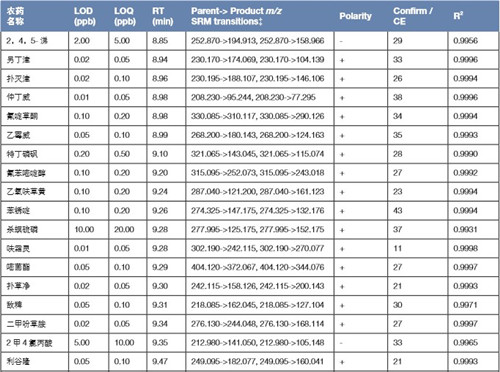
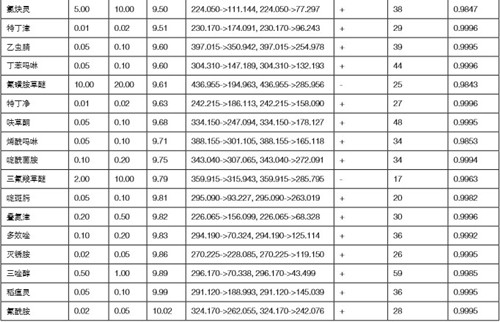
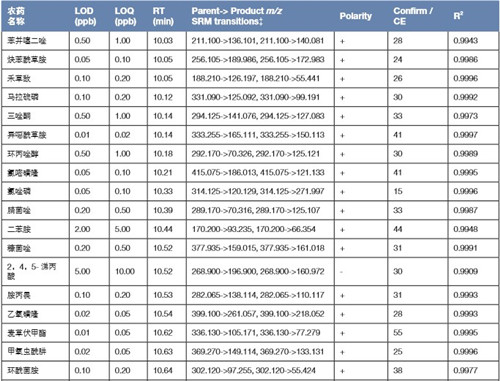
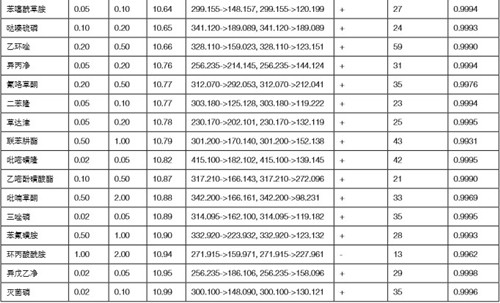
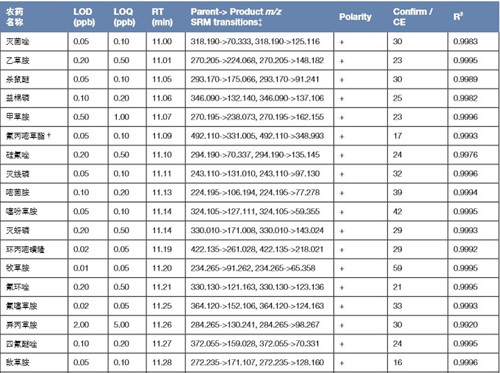

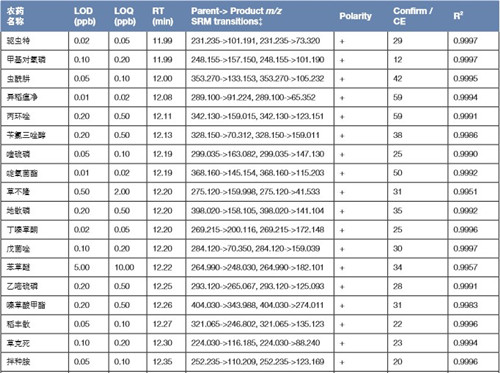
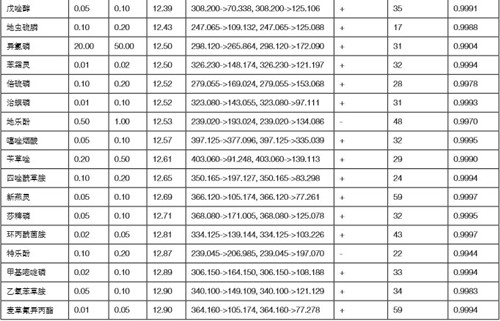
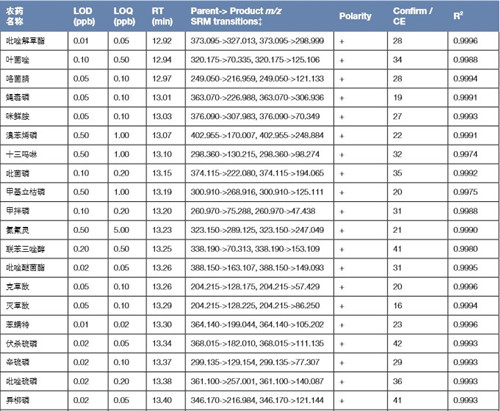
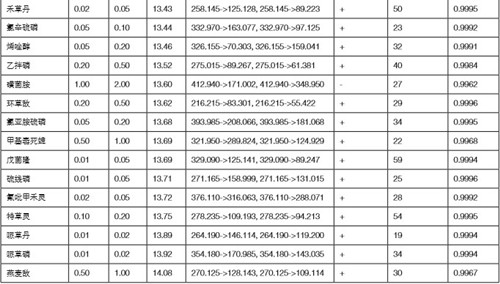
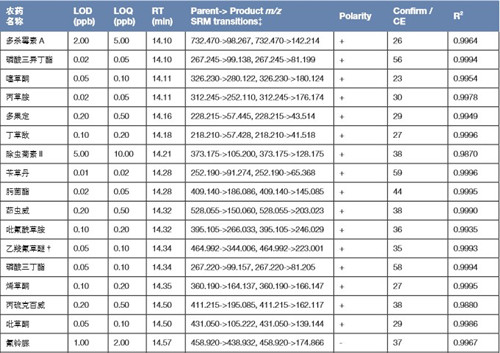
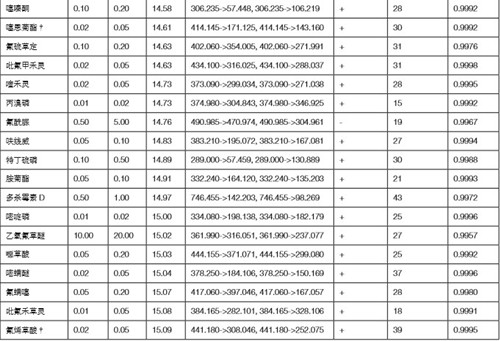
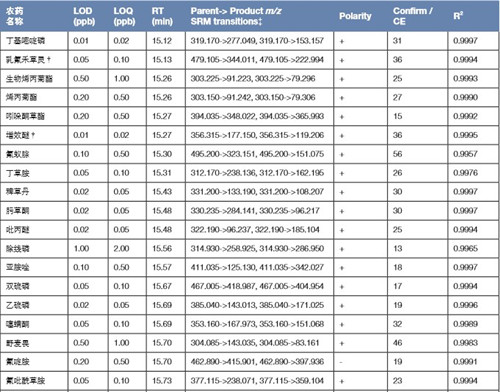
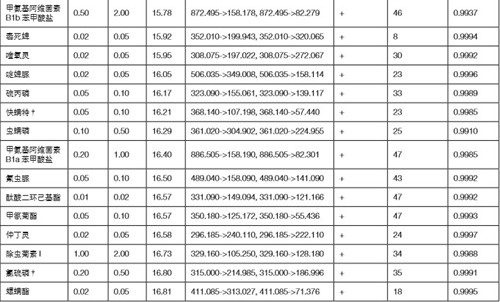
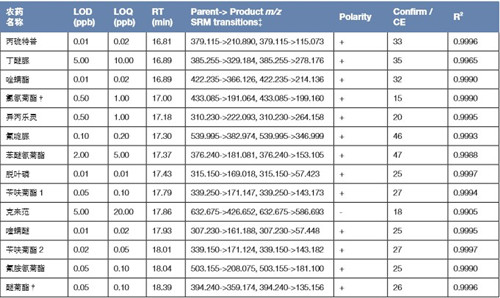
†: The parent ion is the [M+NH4] + peak, and the rest are [M+H] + or [MH] - peaks.
‡ : The first sub-ion is a quantitative ion, and the latter one is a qualitative confirmation ion
Small Safe,Smart Safe,Electronic Safe,Portable Safe Box
Hebei Yingbo Safe Boxes Co.,Ltd , https://www.ybsafebox.com